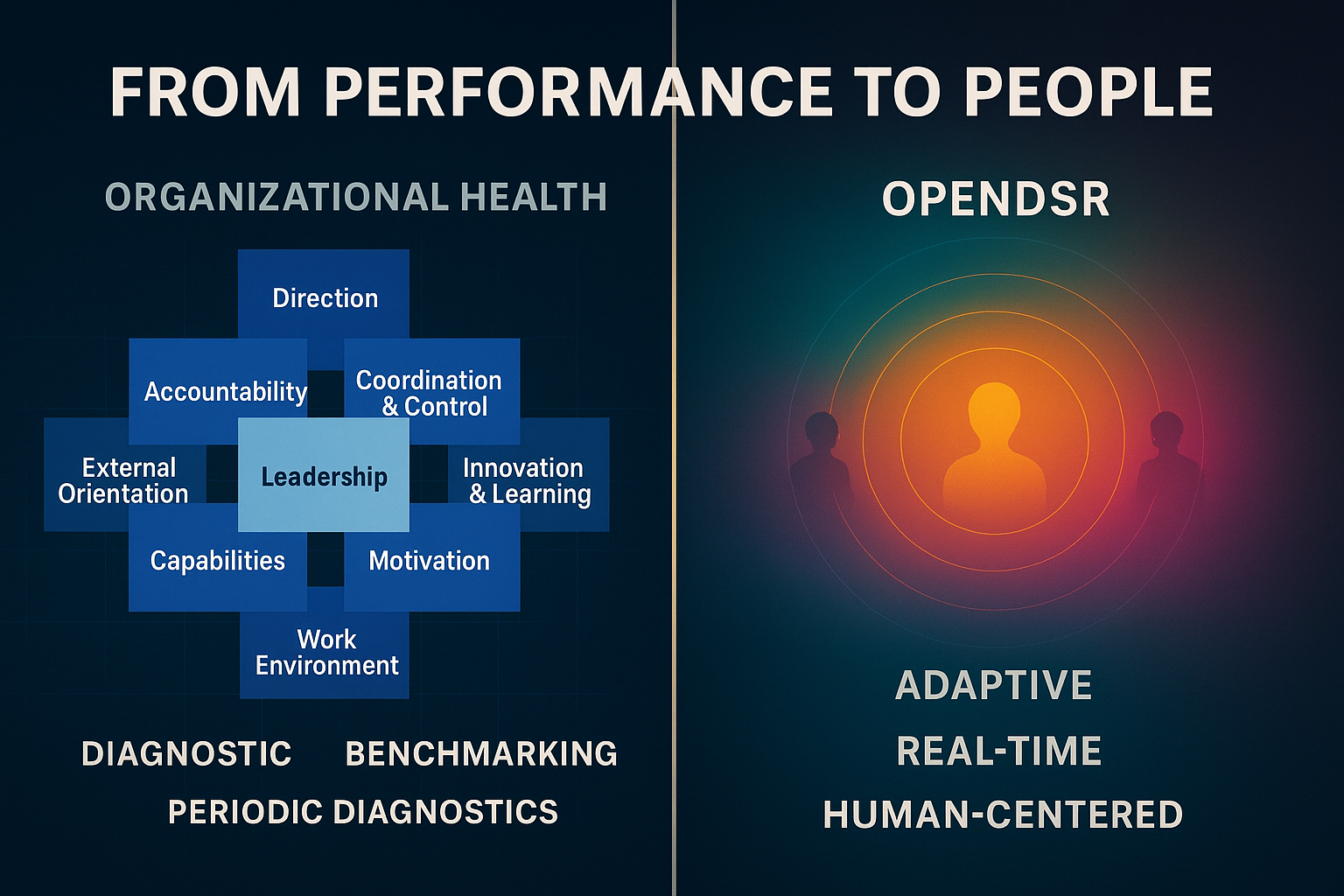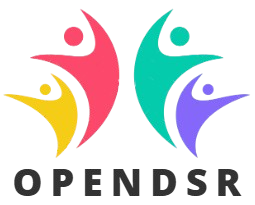
OPENDSR vs McKinsey’s OHI: From Performance to People
OPENDSR vs McKinsey’s OHI: From Performance to People
Reframing Organizational Health Through Empathy and Real-Time Intelligence
Introduction
For years, frameworks like McKinsey’s Organizational Health Index (OHI) have helped leaders understand what drives high-performing organizations — structure, leadership alignment, accountability, and execution.
But the modern workplace demands more. Health is not enough; organizations must also stay human while scaling performance.
That’s where OPENDSR steps in — not as a competitor, but as an evolution in how we measure, design, and sustain the employee experience.
The Old Paradigm: Measuring Health, Managing Performance
McKinsey’s OHI is built to measure internal conditions that sustain organizational performance.
It identifies key dimensions such as:
-
Leadership and Direction
-
Accountability and Innovation
-
Coordination and Control
-
External Orientation
Insight: OHI gives leaders a “snapshot” of what’s working and what’s not — a diagnostic view of organizational health.
However, this framework often stops at diagnosis. It reveals what’s wrong but doesn’t tell you how to design better experiences. The human layer — emotion, connection, belonging — remains largely unmeasured.
The New Paradigm: Designing with Empathy and Systemic Intelligence
OPENDSR (Open Design System for Realities) transforms that static assessment into a living, human-centered operating system.
It blends empathy, design standards, and real-time intelligence into one measurable framework that helps organizations listen, learn, and evolve continuously.
Key OPENDSR Capabilities:
-
Observe & Sense: Capture real-time feedback and emotional cues from the workforce.
-
Prioritize & Envision: Turn human insights into leadership priorities.
-
Navigate & Design: Co-create experiences that align people, processes, and systems.
-
Refine Continuously: Keep experience intelligence alive through iterative learning loops.
“OPENDSR is not just a survey or a dashboard — it’s a Human Operating System that enables organizations to stay emotionally and operationally intelligent.”
From Health Metrics to Human Experience Framework Framework Focus Approach Output McKinsey OHI Organizational Health Diagnostic, periodic Benchmark insights OPENDSR Human-Centered Experience Continuous, adaptive Real-time design and improvement
OHI tells you how healthy your organization is.
OPENDSR shows you how to keep it alive and evolving.
The Shift: From Performance to People
Performance is the result.
People are the system.
Where OHI measures alignment, OPENDSR measures empathy-in-action — how daily experiences and leadership behaviors affect real people.
Reflection: When organizations focus solely on performance, people adapt temporarily.
When they focus on people, performance sustains itself naturally.
OPENDSR connects data with emotion, process with meaning, and strategy with behavior, turning metrics into movement — and employees into co-designers of the workplace.
Why It Matters Now
In a time defined by AI, automation, and hybrid work, success depends on emotional intelligence as much as technical efficiency.
OPENDSR gives organizations a new kind of intelligence — one that listens, learns, and leads with empathy.
It’s:
-
Not a tool → but a framework for human understanding.
-
Not a dashboard → but a dialogue with your workforce.
-
Not measurement → but design for life at work.
Conclusion: The Future is Human by Design
Both OHI and OPENDSR help organizations thrive —
but they operate on different levels of consciousness.
OHI defines what makes an organization healthy.
OPENDSR defines what makes it human.
By shifting from performance metrics to empathy-led intelligence, OpenDSR helps organizations:
-
Measure what matters,
-
Design what endures, and
-
Lead what inspires.
Because the future of work isn’t delivered — it’s designed.








